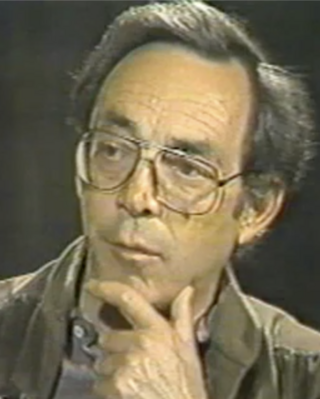
The civil rights movement was a social movement and campaign in the United States from 1954 to 1968 that aimed to abolish legalized racial segregation, discrimination, and disenfranchisement in the country, which was most commonly employed against African Americans. The movement had origins in the Reconstruction era during the late 19th century, and had modern roots in the 1940s. After years of direct actions and grassroots protests, the movement made its largest legislative and judicial gains during the 1960s. The movement's major nonviolent resistance and civil disobedience campaigns eventually secured new protections in federal law for the civil rights of all Americans.

The Student Nonviolent Coordinating Committee, and later, the Student National Coordinating Committee was the principal channel of student commitment in the United States to the civil rights movement during the 1960s. Emerging in 1960 from the student-led sit-ins at segregated lunch counters in Greensboro, North Carolina, and Nashville, Tennessee, the Committee sought to coordinate and assist direct-action challenges to the civic segregation and political exclusion of African Americans. From 1962, with the support of the Voter Education Project, SNCC committed to the registration and mobilization of black voters in the Deep South. Affiliates such as the Mississippi Freedom Democratic Party and the Lowndes County Freedom Organization in Alabama also worked to increase the pressure on federal and state government to enforce constitutional protections.

The American Medical Association (AMA) is an American professional association and lobbying group of physicians and medical students. Founded in 1847, it is headquartered in Chicago, Illinois. Membership was 271,660 in 2022.
The Mississippi Freedom Democratic Party (MFDP), also referred to simply as the Freedom Democratic Party, was an American political party that existed in the state of Mississippi from 1964 to 1968 during the Civil Rights Movement. Created as the partisan political branch of the Freedom Democratic organization, the party was organized by African Americans and White Americans from Mississippi who were sympathetic to the Civil Rights Movement. The organization aimed to challenge the established power of the state Mississippi Democratic Party, which then opposed the Civil Rights Movement and only allowed participation by White Americans.

Freedom Summer, also known as Mississippi Freedom Summer, was a campaign launched by American civil rights activists in June 1964 to register as many African-American voters as possible in the state of Mississippi. Blacks in the state had been largely prevented from voting since the turn of the 20th century due to barriers to voter registration and other Jim Crow laws that had been enacted throughout the American South. The project also set up dozens of Freedom Schools, Freedom Houses, and community centers such as libraries, in small towns throughout Mississippi to aid the local Black population.

Ella Josephine Baker was an African-American civil rights and human rights activist. She was a largely behind-the-scenes organizer whose career spanned more than five decades. In New York City and the South, she worked alongside some of the most noted civil rights leaders of the 20th century, including W. E. B. Du Bois, Thurgood Marshall, A. Philip Randolph, and Martin Luther King Jr. She also mentored many emerging activists, such as Diane Nash, Stokely Carmichael, and Bob Moses, as leaders in the Student Nonviolent Coordinating Committee (SNCC).

The March Against Fear was a major 1966 demonstration in the Civil Rights Movement in the South. Activist James Meredith launched the event on June 5, 1966, intending to make a solitary walk from Memphis, Tennessee, to Jackson, Mississippi via the Mississippi Delta, starting at Memphis's Peabody Hotel and proceeding to the Mississippi state line, then continuing through, respectively, the Mississippi cities of Hernando, Grenada, Greenwood, Indianola, Belzoni, Yazoo City, and Canton before arriving at Jackson's City Hall. The total distance marched was approximately 270 miles over a period of 21 days. The goal was to counter the continuing racism in the Mississippi Delta after passage of federal civil rights legislation in the previous two years and to encourage African Americans in the state to register to vote. He invited only individual black men to join him and did not want it to be a large media event dominated by major civil rights organizations.
Mary Elizabeth King is a professor of Peace and Conflict Studies at the United Nations affiliated University for Peace, a political scientist, and author of several publications. She is a graduate of Ohio Wesleyan University and received a doctorate in international politics from Aberystwyth University in 1999. She is also a Fellow of the Rothermere American Institute and a distinguished Scholar at the American University Center for Global Peace in Washington D.C.
Alvin Francis Poussaint is an American psychiatrist known for his research on the effects of racism in the black community. He is a noted author, public speaker, and television consultant, and dean of students at Harvard Medical School. His work in psychiatry is influenced greatly by the civil rights movement in the South, which he joined in 1965.

Gloria Richardson Dandridge was an American civil rights activist best known as the leader of the Cambridge movement, a civil rights action in the early 1960s in Cambridge, Maryland, on the Eastern Shore. Recognized as a major figure in the Civil Rights Movement, she was one of the signatories to "The Treaty of Cambridge", signed in July 1963 with Attorney General Robert F. Kennedy, and state and local officials. It was an effort at reconciliation and commitment to change after a riot the month before.
Quentin David Young was an American physician who was recognized for his efforts in advocating for single-payer health care in the United States. An activist who opposed the Vietnam War and worked on the Civil Rights Movement, Young was best known for speaking out about social justice in the realm of health policy.
The Chicago Freedom Movement, also known as the Chicago open housing movement, was led by Martin Luther King Jr., James Bevel and Al Raby. It was supported by the Chicago-based Coordinating Council of Community Organizations (CCCO) and the Southern Christian Leadership Conference (SCLC).

The Freedom Singers originated as a quartet formed in 1962 at Albany State College in Albany, Georgia. After folk singer Pete Seeger witnessed the power of their congregational-style of singing, which fused black Baptist a cappella church singing with popular music at the time, as well as protest songs and chants. Churches were considered to be safe spaces, acting as a shelter from the racism of the outside world. As a result, churches paved the way for the creation of the freedom song. After witnessing the influence of freedom songs, Seeger suggested The Freedom Singers as a touring group to the SNCC executive secretary James Forman as a way to fuel future campaigns. Intrinsically connected, their performances drew aid and support to the Student Nonviolent Coordinating Committee (SNCC) during the emerging civil rights movement. As a result, communal song became essential to empowering and educating audiences about civil rights issues and a powerful social weapon of influence in the fight against Jim Crow segregation. Their most notable song “We Shall Not Be Moved” translated from the original Freedom Singers to the second generation of Freedom Singers, and finally to the Freedom Voices, made up of field secretaries from SNCC. "We Shall Not Be Moved" is considered by many to be the "face" of the Civil Rights movement. Rutha Mae Harris, a former freedom singer, speculated that without the music force of broad communal singing, the civil rights movement may not have resonated beyond the struggles of the Jim Crow South. Since the Freedom Singers were so successful, a second group was created called the Freedom Voices.

Herman J. Geiger, known as H. Jack Geiger, was an American physician and civil rights activist. He was a leader in the field of social medicine, the philosophy that doctors had a responsibility to treat the social as well as medical conditions that adversely affected patients' health, famously writing prescriptions for food for impoverished patients with malnutrition. Geiger came to embody the idea of the responsibility of a physician to do something about what is now known as the social determinants of health, believing that medicine could be an instrument of social change. He served patients' medical needs as well as social and economic necessities, which he believed were in large part responsible for the health problems communities faced. He was one of the doctors to bring the community health center model to the United States, starting a network that serves 28 million low-income patients as of 2020.

George Raymond Jr. was an African-American civil rights activist, a member of the Mississippi Freedom Democratic Party, a Freedom Rider, and head of the Congress of Racial Equality in Mississippi in the 1960s. Raymond influenced many of Mississippi's most known activists, such as Anne Moody, C. O. Chinn, and Annie Devine to join the movement and was influential in many of Mississippi's most notable Civil Rights activities such as a Woolworth's lunchcounter sit-in and protests in Jackson, Mississippi, Meredith Mississippi March, and Freedom Summer. Raymond fought for voting rights and equality for African Americans within society amongst other things.
The Medical Committee for Human Rights (MCHR) was a group of American health care professionals that initially organized in June 1964 to provide medical care for civil rights workers, community activists, and summer volunteers working in Mississippi during the "Freedom Summer" project. Tightly associated with the Civil Rights Movement, Martin Luther King Jr. notably addressed the 1966 MCHR convention. The organization remained active for years afterward in terms of fighting for disadvantaged Americans to have expanded access to health services, becoming a part of the "new left".

Samuel Leamon Younge Jr. was a civil rights and voting rights activist who was murdered for trying to desegregate a "whites only" restroom. Younge was an enlisted service member in the United States Navy, where he served for two years before being medically discharged. Younge was an active member of the Student Nonviolent Coordinating Committee (SNCC) and a leader of the Tuskegee Institute Advancement League.

Dr. Gilbert R. Mason Sr., was a physician who was a family practitioner and civil rights leader in Biloxi, Mississippi. He is noted for organizing three wade-ins, from 1959 to 1963, to desegregate the city's public beaches, which had been made with federal funds. This was the first nonviolent civil disobedience action conducted in Mississippi in the 1950s.
Peter Orris is an American political activist, Medical Doctor and Professor and Chief of Occupational and Environmental Medicine at the University of Illinois at Chicago Hospital and Health Sciences System. Raised in New York City by his parents, Trudy and Leo Orris, Orris was involved with the civil rights movement from age eleven. While known for his work in the field of medicine, Orris is also known for his work in the Civil Rights Movement.
Civil rights in the United States include noted legislation and organized efforts to abolish public and private acts of racial discrimination against Native Americans, African Americans, Asians, Latin Americans, women, the homeless, minority religions, and other groups. The history of the United States has been marked by a continuous struggle for civil rights. The institution of slavery, established during the colonial era, persisted until the American Civil War, when the Emancipation Proclamation and the 13th Amendment abolished it. Despite this, African Americans continued to face systemic racism through de jure and de facto segregation, enforced by Jim Crow laws and societal practices. Early civil rights efforts, such as those by Frederick Douglass and the women's suffrage movement, laid the groundwork for future activism.












